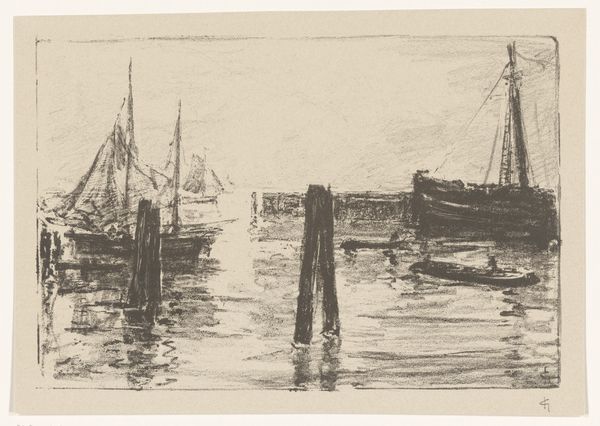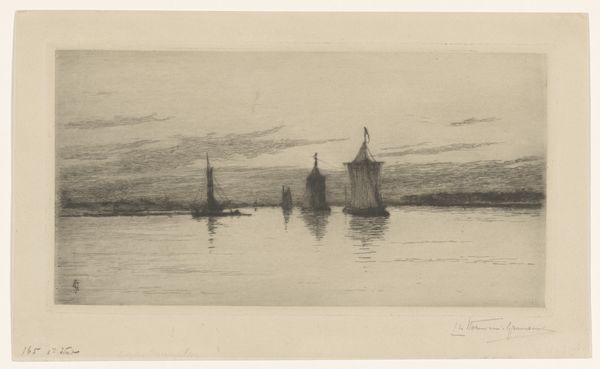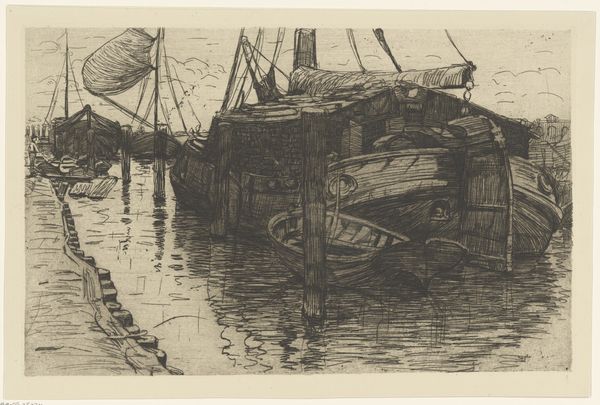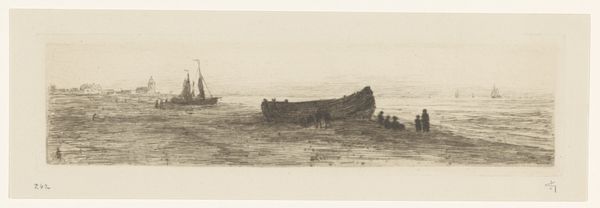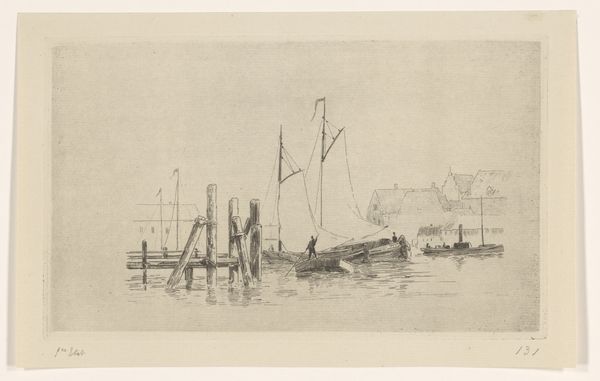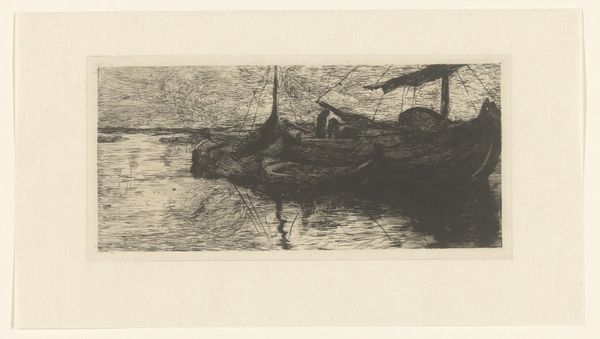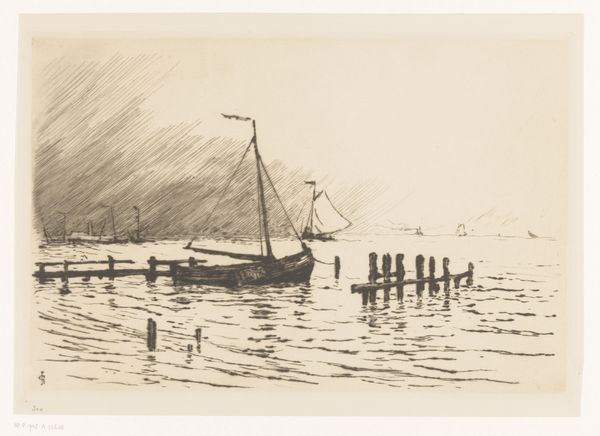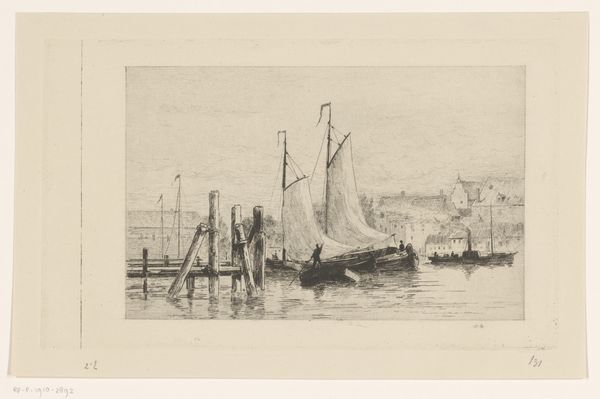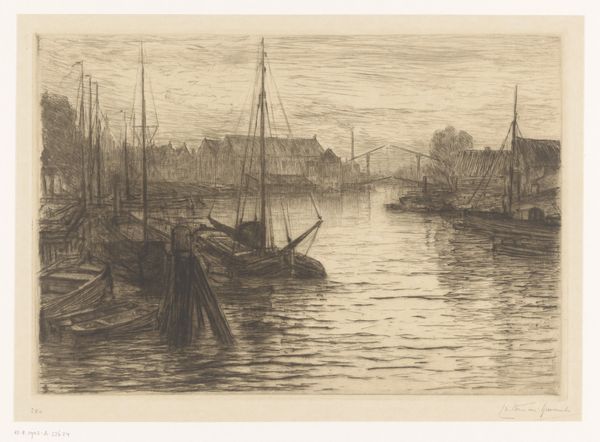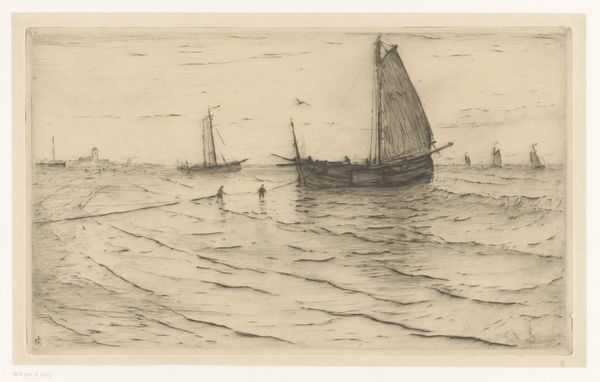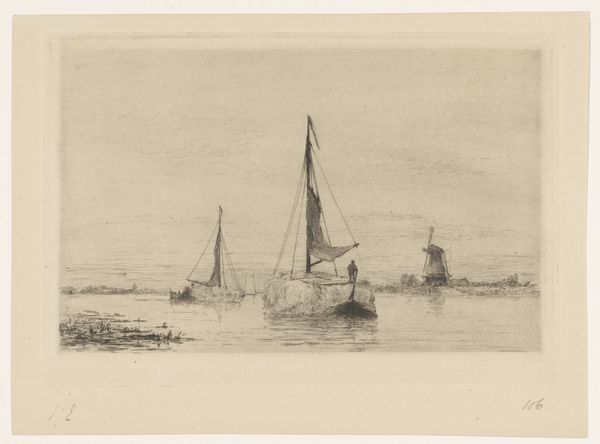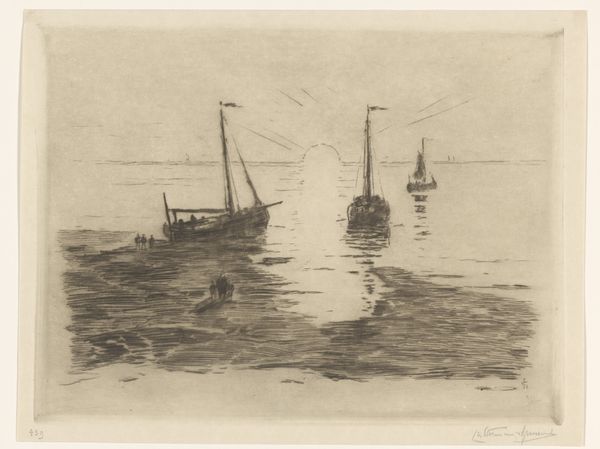
drawing, print, etching, photography, ink
#
drawing
#
ink drawing
# print
#
etching
#
landscape
#
river
#
photography
#
ink
#
cityscape
#
realism
Dimensions: height 168 mm, width 345 mm
Copyright: Rijks Museum: Open Domain
Curator: Let's delve into Carel Nicolaas Storm van 's-Gravesande's "Temse aan de Schelde bij avond," an etching from the 1880s, currently residing in the Rijksmuseum. What strikes you about it at first glance? Editor: The composition, at first impression, feels dominated by a hazy calm; a subdued yet structured atmospheric piece with those looming, textured skies mirrored in the water, it draws the eye toward an understated industrialization by the riverside. Curator: The choice of etching allows us to scrutinize the textural play across the surface. The layering of those fine lines and the economy of strokes used by Storm van 's-Gravesande speak to the labor involved but also highlight his skilled handling of the printing process, especially when thinking of photogravure practices developing at this time. It would be useful to know what the economic status of this was too. Editor: Yes, it’s clear the medium is significant. I am wondering about how the form here impacts content: note the emphasis on tonal values that lend the scene a kind of hushed gravity. It’s certainly evocative and plays into those notions of Realism capturing modern urban, industrial moods. What meanings emerge from this formal approach to light and shadow? Curator: We must also think about the urban transformations around the Schelde River during this period and this place, how such industrial ports were also critical junctions of social transformation. The artist is working in a moment where he and others, such as Constantin Meunier are grappling with this shift and also, an investment into the labor processes around industrial art. Editor: That gives richer context for the themes at work here! Viewing it simply from a formalist perspective—examining composition, tone, the use of light—it certainly evokes those industrial realities and socio-economic conditions with powerful aesthetic means. Curator: So, from the work involved with producing prints like these to its subject being an emerging urban port and finally finding a place amongst audiences for the burgeoning medium photography; the drawing encourages considering interlinking production with broader material cultures of late nineteenth century art and commerce. Editor: Indeed. When taken together with these historical contexts, and formal means, it speaks eloquently.
Comments
No comments
Be the first to comment and join the conversation on the ultimate creative platform.
